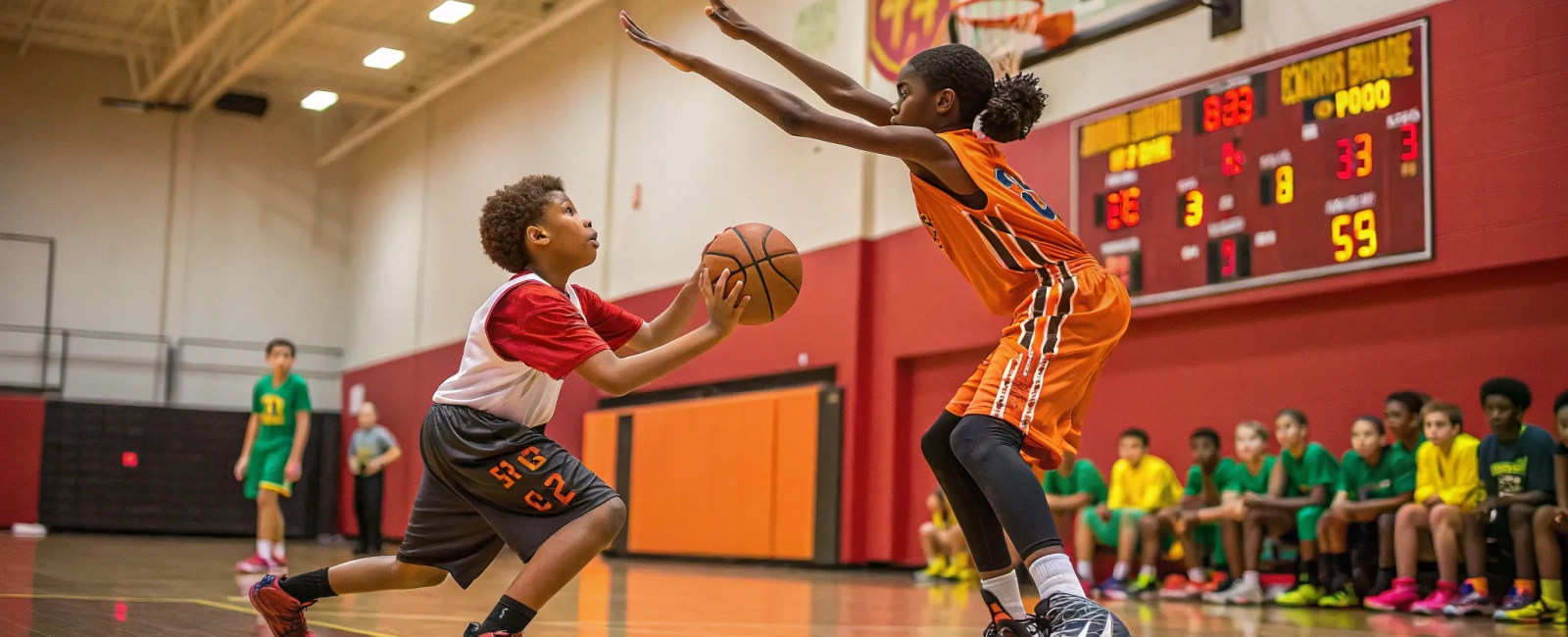Revive the Drop Step: Why Classic Defense Skills Matter

When’s the last time you watched a youth basketball game and thought, “Wow, that kid’s footwork is textbook!”? If you’re like most folks, you’re too busy dodging rogue Gatorade bottles or wondering why the ref missed that obvious travel. But here’s the thing: those quiet, unglamorous skills—like the drop step—are what separate kids who look like they know what they’re doing from kids who actually do.
You know the move. That clunky-looking backward shuffle where a defender plants one foot and slides the other back like they’re avoiding a puddle. It’s not flashy. It won’t make TikTok compilations. But done right? It’s the difference between giving up an easy layup and shutting down the paint. Let’s break down why this dinosaur of a technique isn’t just surviving in modern basketball—it’s thriving… if you use it smartly.
Why the Drop Step Isn’t Dead (Even If Your Kid Thinks It Is)
Picture this: a 12-year-old center trying to guard a taller, stronger post player. The offensive kid spins left, then right, then left again—like a washing machine stuck on agitator mode. Without the drop step, your defender’s either getting bulldozed or lunging wildly, arms flailing like they’re swatting bees. The drop step? It’s the defensive equivalent of planting a flag in the ground and saying, “Nope. Not here.”
Here’s the science: When a defender drops one foot back, they widen their base, lowering their center of gravity. Think of it like a linebacker bracing for a tackle—suddenly, they’re harder to push around. Studies show this stance boosts stability by up to 30% compared to upright positions. But here’s the kicker: most amateur players overuse it, turning what should be a quick adjustment into a sluggish stumble.
The Modern Twist: Today’s game isn’t just about brute strength. Offenses spread the floor, with big men shooting threes and guards driving like they’re late for curfew. The drop step works best when paired with quicker moves—like the hip turn (more on that later)—to handle faster opponents. NBA centers still use it, but they’ll mix in rapid pivots to recover when guards blow past them.
The Hip Turn vs. Drop Step Debate: It’s Not Either/Or
Alright, let’s address the elephant in the gym. Plenty of coaches swear the hip turn—a snappy pivot where defenders twist their hips to change direction—is the “future” of defense. And they’re not wrong. It’s faster, smoother, and looks cooler. But here’s where parents get bamboozled: your kid doesn’t need to choose. They need both.
Think of it like cooking. The hip turn is your nonstick pan—perfect for quick, delicate adjustments. The drop step? That’s your cast-iron skillet. Heavy-duty, reliable, but useless if you’re trying to flip a crepe. Use the wrong tool, and dinner’s ruined.
When to Drop Step:
- Guarding a post player who’s backing you down like a dump truck in reverse.
- Cutting off baseline drives (that backward step seals the edge).
- Recovering after a help defender forces a ball handler toward you.
When to Hip Turn:
- Switching onto a guard who’s quicker than a caffeine-addicted squirrel.
- Closing out on shooters without fouling.
- Rotating to cover a skip pass.
Pro tip: The best defenders chain these moves. Drop step to hold position, then hip turn to sprint out to a shooter. It’s like a dance move—step back, spin, explode.
Drills That Don’t Suck (Seriously, Your Kid Might Even Like These)
Let’s be honest: most defensive drills are as fun as watching paint dry. But here’s how to make footwork click for your athlete—without the groaning:
1. The “Shadow Shuffle”
What it teaches: Balance + timing.
How to do it:
- Have your kid face a teammate (or a cone) in the post.
- The offensive player fakes left, then right, then spins.
- Defender practices dropping the correct foot without crossing their legs.
Key detail: Their chest should stay squared to the opponent’s belly button. No turning!
2. The “Turn & Burn” Combo
What it teaches: Transitioning from drop step to hip turn.
How to do it:
- Start with a drop step to stop a drive.
- Immediately pivot into a hip turn and sprint to close out on an imaginary shooter in the corner.
Why it works: Mimics real-game scenarios where big men have to guard multiple threats.
3. The “Chair Gauntlet”
What it teaches: Footwork under pressure.
How to do it:
- Set up 3 chairs in a zigzag pattern from the basket to the 3-point line.
- Defender must drop step around each chair while staying low.
- Add a coach/player tossing a tennis ball for them to catch mid-move.
Bonus: Laugh at how ridiculous they look. Laughter = less stress = better learning.
Why Your Kid’s Coach Might Be Getting It Wrong
No offense to volunteer dads in polo shirts, but a lot of youth coaches teach the drop step like it’s 1995. They’ll have kids grind through drills in slow motion, never linking the move to actual game speed. Result? Kids freeze up when they’re not in a perfectly scripted practice.
Here’s the fix: Add chaos. Once your kid can drop step smoothly, throw in distractions. Have a teammate wave a towel. Blow a whistle mid-move. Make them shout out the score while defending. It’s like learning to drive—you don’t master parallel parking in an empty lot. You need someone’s grandma honking behind you.
The Bottom Line (No MBA Required)
The drop step isn’t going extinct. It’s just evolving. Teach your kid to treat it like a trusty old pickup truck—reliable for heavy lifting, but you wouldn’t take it to a drag race. Pair it with quicker techniques, drill it under pressure, and remind them that defense isn’t about highlights. It’s about making the other team mutter, “Why can’t we score?!”
And hey, if all else fails? Bribe them with post-practice smoothies. Works better than any pep talk.
